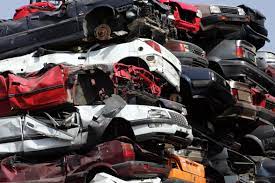End-of-life vehicles
Where to put the old vehicle ?
The disposal of end-of-life vehicles is regulated in accordance with the Grand-Ducal Regulation on End-of-Life Vehicles and the agreement between the Luxembourg car dealers/importers and the Ministry for the Environment, Climate and Biodiversity. Affected are not only cars (and vans with up to 9 seats including driver) but also vans up to a total weight of 3.5 tons. This applies to vehicles of any age since 01.01.2007.
Industry and trade are therefore obliged to install systems for collection and dismantling. The vehicle owner is obliged to dispose of the end-of-life vehicle via an approved collection point or to take it to a dismantling facility. Here he will receive an official certificate of destruction for presentation to SNCA. Vehicles can only be deregistered with a recycling certificate.
However, a prerequisite for free handover is that the end-of-life vehicle still contains all essential parts such as the engine, gearbox, etc. and that no foreign waste has been added. The end-of-life vehicles can be taken by the last owner both to a collection point and directly to the dismantling facility. Ask your car dealer. Detailed information on the collection points commissioned by the manufacturers can be found on the emwelt.lu website.
In the dismantling facility, the end-of-life vehicles are de-polluted. All problematic components, i.e. operating fluids, the battery, airbags, the catalytic converter and all other parts that may contain problematic products, are removed. In addition to the problem products, the regulation also requires the dismantling of wheels, glass panes, aluminium rims, balancing weights as well as other metals if these are not separated during subsequent shredding. From 1 January 2015, the legislation provides for higher recovery rates of up to 95% of end-of-life vehicles.
Please note that end-of-life vehicles are subject to the waste law. Vehicles that have not been polluted and therefore still contain used oils, operating fluids or the battery are considered hazardous waste.
Therefore, do not give end-of-life vehicles to unknown buyers or scrap dealers. Make sure that you receive an officially recognised recycling certificate.
When buying a new vehicle, pay attention to the environment, i.e. low consumption and CO2 emissions, as well as good recyclability at the end of use.
The End-of-Life Vehicles Regulation goes beyond the simple take-back obligation and explicitly calls for new avoidance and recycling strategies. This is to be achieved, among other things, by designing and building vehicles that are easy to dismantle and whose parts are easier to reuse or recycle, as well as increasing the use of recycled products in car manufacturing. In this sense, fixed recycling quotas are also required. In addition to the quotas, the legislation also provides for the gradual replacement of hazardous components such as mercury, lead and chromium IV in new cars with non-problematic substances.

End-of-life vehicles
Where to put the old vehicle ?
The disposal of end-of-life vehicles is regulated in accordance with the Grand-Ducal Regulation on End-of-Life Vehicles and the agreement between the Luxembourg car dealers/importers and the Ministry for the Environment, Climate and Biodiversity. Affected are not only cars (and vans with up to 9 seats including driver) but also vans up to a total weight of 3.5 tons. This applies to vehicles of any age since 01.01.2007.
Industry and trade are therefore obliged to install systems for collection and dismantling. The vehicle owner is obliged to dispose of the end-of-life vehicle via an approved collection point or to take it to a dismantling facility. Here he will receive an official certificate of destruction for presentation to SNCA. Vehicles can only be deregistered with a recycling certificate.
However, a prerequisite for free handover is that the end-of-life vehicle still contains all essential parts such as the engine, gearbox, etc. and that no foreign waste has been added. The end-of-life vehicles can be taken by the last owner both to a collection point and directly to the dismantling facility. Ask your car dealer. Detailed information on the collection points commissioned by the manufacturers can be found on the emwelt.lu website.
In the dismantling facility, the end-of-life vehicles are de-polluted. All problematic components, i.e. operating fluids, the battery, airbags, the catalytic converter and all other parts that may contain problematic products, are removed. In addition to the problem products, the regulation also requires the dismantling of wheels, glass panes, aluminium rims, balancing weights as well as other metals if these are not separated during subsequent shredding. From 1 January 2015, the legislation provides for higher recovery rates of up to 95% of end-of-life vehicles.
Please note that end-of-life vehicles are subject to the waste law. Vehicles that have not been polluted and therefore still contain used oils, operating fluids or the battery are considered hazardous waste.
Therefore, do not give end-of-life vehicles to unknown buyers or scrap dealers. Make sure that you receive an officially recognised recycling certificate.
When buying a new vehicle, pay attention to the environment, i.e. low consumption and CO2 emissions, as well as good recyclability at the end of use.
The End-of-Life Vehicles Regulation goes beyond the simple take-back obligation and explicitly calls for new avoidance and recycling strategies. This is to be achieved, among other things, by designing and building vehicles that are easy to dismantle and whose parts are easier to reuse or recycle, as well as increasing the use of recycled products in car manufacturing. In this sense, fixed recycling quotas are also required. In addition to the quotas, the legislation also provides for the gradual replacement of hazardous components such as mercury, lead and chromium IV in new cars with non-problematic substances.







